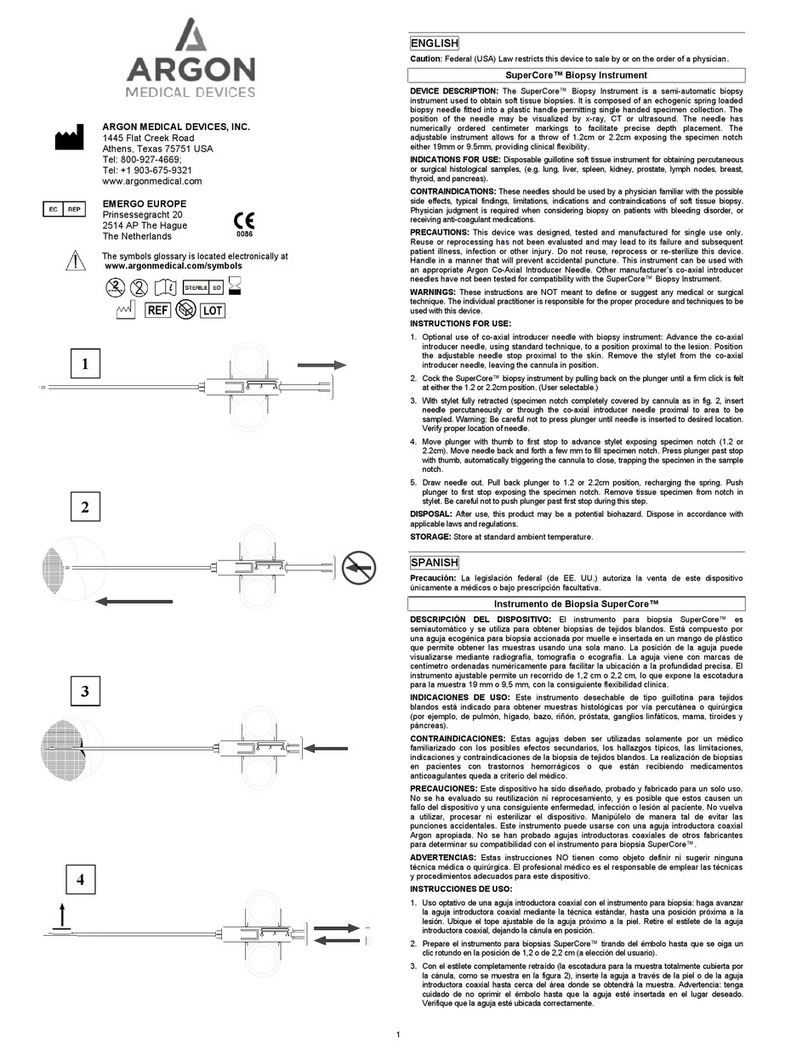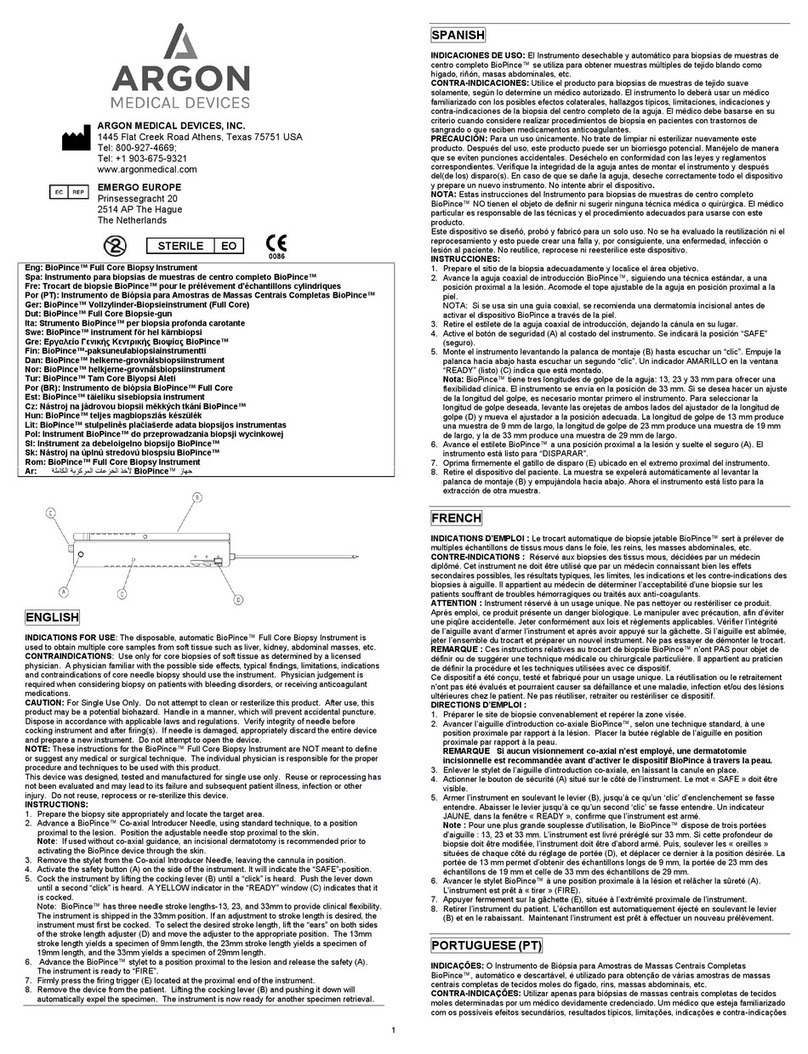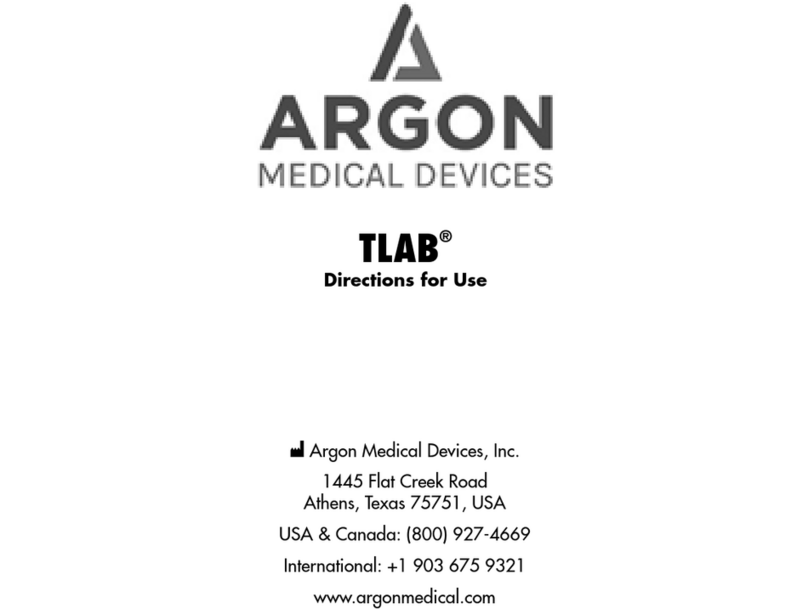
13.
Cover the device and remove it from the graft or fistula. Flush the catheter lumen
with heparinized saline and manually remove any accumulated fibrin from the
sinuous wire.
14.
Aspirate the macerated clot via the sheath and discard the aspirate. Precaution:
Continued unsuccessful aspiration may collapse the sheath andgraft/fistula.
15.
Inject a small amount of contrast via the venous sheath to assess the degree of
thrombus removal accomplished. Warning: Avoid over-injection of contrast to
minimize the risk of arterial embolization. Treat the residual thrombus by
repeating steps 11-14 until acceptable thrombus removal is achieved.
16.
Administer local anesthetic at the puncture site for arterial sheath insertion. Prepare
and place the arterial introducer sheath per hospital protocol. The arterial sheath
should be directed toward the arterial anastomosis. Precaution: The arterial and
venous sheath tips must not overlap.
17.
Support the flexible tip between the thumb and index finger during insertion through
the sheath valve. Insert the covered device through the arterial sheath into the
arterial limb of the fistula or graft.
18.
In a graft, advance the flexible tip up to the arterial anastomosis. Warning: Do not
advance it beyond the anastomosis. In a fistula, advance the flexible tip up to the
central most extent of the clot. Uncover the sinuous wire by unlocking, fully
retracting the sliding lever and rotating the sliding lever until an audible “click” is
heard. Confirm device positioning within the fistula or graft via fluoroscopy. Press
the ON/OFF switch to activate rotation.
19.
With the device activated, slowly withdraw the rotating sinuous wire, in the
uncovered position, along the graft or fistula to break up the clot. Warning: A
withdraw rate of 1-2 cm/second is recommended when sharp radii are
encountered. When the sinuous wire reaches the tip of the arterial sheath, release
the switch to turn off the rotator.
20.
Cover the device and remove it from the graft or fistula. Flush the catheter lumen
with heparinized saline and manually remove any accumulated fibrin from the
sinuous wire.
21.
Aspirate the macerated clot using either sheath and discard the aspirate.
Precaution: Continued unsuccessful aspiration may collapse the sheath and
graft/fistula.
22.
Pass an appropriate catheter through the arterial sheath, and carefully feed it past
the arterial anastomosis of the graft or fistula. Inflate the balloon, if it is a balloon
catheter. Pull the arterial plug into the middle of the arterial limb. Deflate the balloon
and remove the balloon catheter.
23.
Reinsert the covered CLEANER 15™device through the arterial sheath into the
arterial limb of the graft or fistula.
24.
Uncover the sinuous wire and activate the device to break up the arterial plug, using
contrast to guide maceration.
25.
Cover the device and remove it from the graft or fistula. Flush the catheter lumen
with heparinized saline and manually remove any accumulated fibrin from the
sinuous wire.
26.
Aspirate the macerated clot via the sheath and discard theaspirate.
27.
Inject contrast to assess the degree of thrombus removal. Treat any residual
thrombus using the CLEANER 15™via either sheath, asneeded.
28.
When the thrombus removal is complete, treat any underlying disease or stenosis
per hospital protocol.
29.
Perform the final fistulogram.































